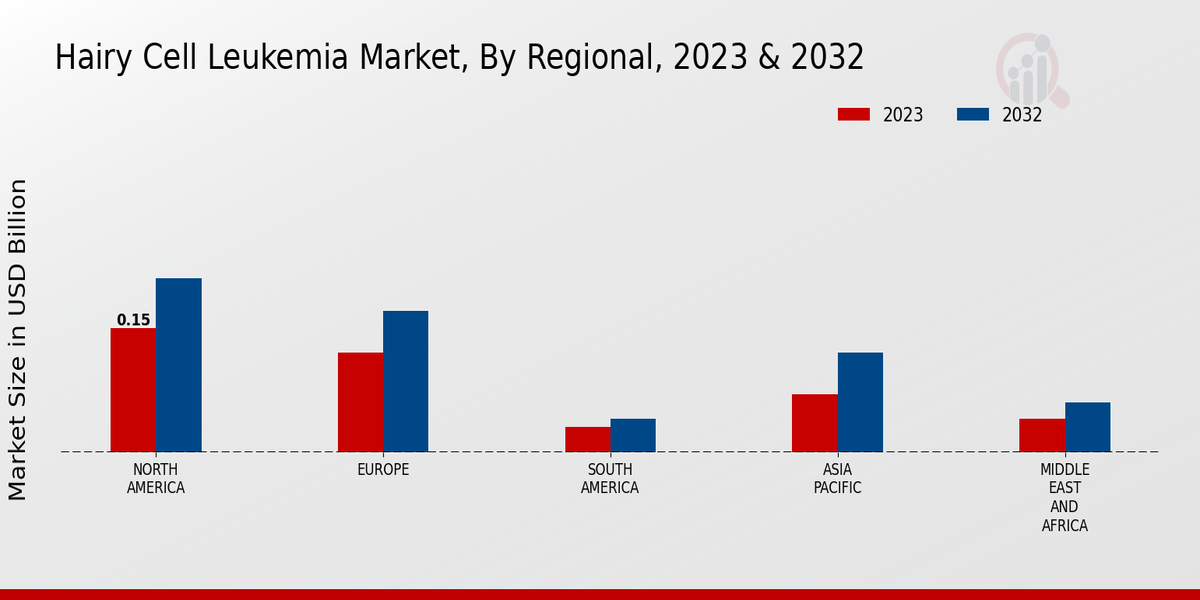Market Growth Projections
The Global Hairy Cell Leukemia Market Industry is projected to experience substantial growth over the next decade. With a market valuation of 0.28 USD Billion in 2024, it is expected to reach 0.45 USD Billion by 2035. This growth is underpinned by a compound annual growth rate (CAGR) of 4.37% from 2025 to 2035. Such projections indicate a robust market environment, driven by various factors including increased incidence rates, advancements in treatment options, and supportive government policies. The market dynamics suggest a promising future for stakeholders involved in the hairy cell leukemia sector.
Supportive Government Policies
Supportive government policies and initiatives are instrumental in fostering growth within the Global Hairy Cell Leukemia Market Industry. Governments worldwide are increasingly recognizing the need for better healthcare solutions for rare diseases, including hairy cell leukemia. Funding for research, development of treatment protocols, and patient support programs are being prioritized. Such policies not only enhance the availability of treatment options but also encourage pharmaceutical companies to invest in this niche market. This supportive environment is expected to facilitate market growth, aligning with the projected increase in market valuation over the coming years.
Growing Awareness and Education
Increased awareness and education regarding hairy cell leukemia are crucial drivers of the Global Hairy Cell Leukemia Market Industry. Healthcare professionals are becoming more informed about the disease, leading to earlier diagnosis and treatment. Public health campaigns and educational initiatives are also playing a significant role in informing patients and their families about symptoms and treatment options. This heightened awareness is likely to result in a higher number of diagnosed cases, thereby expanding the market. As a result, the industry is poised for growth, with a projected CAGR of 4.37% from 2025 to 2035.
Advancements in Treatment Options
Innovations in treatment modalities are pivotal in shaping the Global Hairy Cell Leukemia Market Industry. Recent developments in targeted therapies and immunotherapies have shown promising results in managing hairy cell leukemia. These advancements not only improve patient outcomes but also enhance the quality of life for those affected. As the market evolves, the introduction of new drugs and treatment protocols is anticipated to attract investment and research efforts. This trend is likely to contribute to the market's projected growth, with an expected valuation of 0.45 USD Billion by 2035, indicating a robust trajectory.
Increasing Incidence of Hairy Cell Leukemia
The Global Hairy Cell Leukemia Market Industry is experiencing growth due to the rising incidence of hairy cell leukemia, a rare type of blood cancer. As awareness increases, more cases are being diagnosed, contributing to market expansion. In 2024, the market is valued at approximately 0.28 USD Billion, reflecting a growing recognition of this condition among healthcare providers and patients. The increasing number of patients necessitates advancements in treatment options, thereby driving demand for innovative therapies and supportive care. This trend is expected to continue, influencing the market dynamics significantly.
Rising Investment in Research and Development
Investment in research and development is a critical factor driving the Global Hairy Cell Leukemia Market Industry. Pharmaceutical companies are allocating substantial resources to discover new therapies and improve existing treatment options for hairy cell leukemia. This focus on R&D is essential for addressing the unmet medical needs of patients and advancing the understanding of the disease. As the industry witnesses increased funding and collaboration among stakeholders, the potential for breakthroughs in treatment is heightened. This trend is likely to contribute to the market's growth trajectory, supporting the anticipated increase in market value.
























